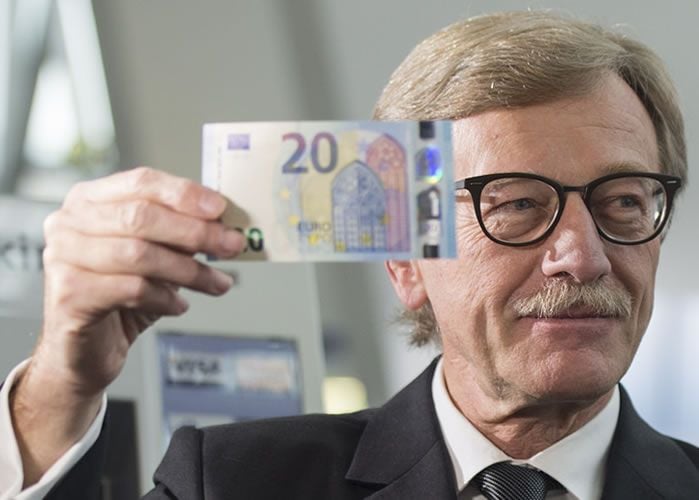EUR/USD Exchange Rate Weakness Forecast to Fade by Credit Suisse, More Downside Confirm Danske & Deutsche Bank
The debate on the EUR/USD’s outlook rages on with those who have long maintained a negative bias towards the pair sounding fresh warnings in the wake of the May decline.
The euro has fallen from highs noted towards 1.1616 and is seen treading water above the support zone noted at 1.12 where many in the market forecast the pair to settle.
The driver of the decline appears to have, once again, been the difference in expectations for future interest rate moves on either side of the Atlantic.
Vast sums of money move from east to west according to where investors anticipate better returns to be found, and the promise of higher rates being set by the US Federal Reserve in 2016 has prompted a fresh surge in demand for dollars.
The USD staged a bigger comeback mainly on the back of last week’s release of the Fed minutes to the April FOMC meeting which showed a greater case of June being considered as a ‘live’ meeting.
In short, markets have bought dollars as they rapidly play catch-up with the Fed.
However, the central bank also explained that incoming data will continue to be a key driver of the central bank’s decision making process.
“If anything, it must still be noted that external risk events such as the UK’s EU referendum have been preventing rate expectations from rising more considerably,” says Valentin Marinov, Head of G10 FX Strategy, at Credit Suisse.
From that angle it still appears unlikely that short-term rate expectations will face more considerable upside risks from current levels.
Indeed, Credit Suisse economists are of the view that the Fed will not tighten monetary policy ahead of the July meeting.
“As a result of the above outlined conditions USD upside may be limited in the short-term still,” says Marinov.
Marinov believes that majors such as EUR/USD may prove more range-bound in the weeks to come, especially as the ECB is nowhere close to considering additional policy action, especially as medium-term inflation expectations as measured by 5Y inflation swaps have been broadly stable.
“Hence, there is limited room of diverging monetary policy expectations in the very short-term,” says Marinov.
Expect Further Weakness Argue Danske Bank
Of course not everyone is in agreement. Allan von Mehren, Chief Analyst at Danske Bank says he believes the risks on EURUSD are to the downside near term.
Three reasons are cited:
- Firstly, positioning is now much cleaner than earlier in the year.
- Secondly, we believe that the market is too negative about the US economy.
- Thirdly, we believe that Brexit risks will weigh on EUR/USD up to the referendum on 23 June.
Danske Bank see a lower EUR/USD as an asymmetric Brexit view as a 'remain' vote would open the door for a Fed September hike.
Brexit risk premia have been reduced over the past month while correlation with EUR/USD has been low.
“In the event of a Brexit (not our base case), EUR/USD is likely to be dragged down short term by the political and economic uncertainty this would generate and that the ECB would most certainly need to ease in this case,” says von Mehren.
Danske target EUR/USD to fall to 1.09 over 3M in case of a Brexit saying the ECB would likely expand its quantitative easing programme rather than cut interest rates in response, which would dampen the EUR negative impact,
Longer term, EUR/USD will head higher on valuations (Danske’s 12M forecast is 1.18) but near term they recommend to be positioned for a lower EUR/USD.
Euro is Going Lower Regardless
Having seen the euro decline over recent weeks, long-time euro-bears Deutsche Bank say they expect EUR/USD to at least revisit 1.05 lows this year on the back of a very weak basic balance, a broadly stronger dollar and more scope for ECB balance sheet expansion, including the new TLTRO II auctions.
Deutsche’s recommendation on EUR/USD is predictably seen as a Sell.
Medium-term EUR forces remain negative argues Deutsche’s George Saravelos:
“The euro has been sidelined over the last few months but caution is warranted in extrapolating the range. One measure of FX market ‘trendiness’ is the Vertical Horizontal Filter (VHF) which is currently at a record low for EUR/USD.
It is exceptionally rare for such levels to persist for long and the risks are rising for an eventual break in the range.
“We think the next break to the range will be on the downside as the medium-term drivers still point to euro weakness,” says Saravelos.
On the monetary policy side the risks are skewed towards more EUR/USD downside too (contrast to Credit Suisse who argue that this is in fact not the case).
Although the ECB is unlikely to announce a new easing package over the summer months the upcoming new TLTRO auctions pose upside risks to the ECB balance sheet.
“Consensus expects a low net take-up in the TLTRO auction on June 24th compared to a maximum take-up of 1.9trio. The risks of greater balance sheet expansion stand in contrast to Fed pricing that is limited to at best one rate hike for this year,” says Saravelos.











